Phase 3: Scaling Up
(Progress Monitoring & Revising)
Start by watching the brief introductory video below or reading its transcript, then explore helpful resources on this page. To download a customizable work plan, please click here.
INTRODUCTORY VIDEO
Driving Questions and Suggested Steps
How are things going?
- Scale and monitor your ongoing efforts for fidelity, efficacy, and opportunities for growth. Specific areas to observe include:
- Integrate the new/revised inclusive vision, mission, and values and establish a process for periodic review/revision
- Implementation of your district rollout plan - to what extent is what was planned being put into effective action? What is going well and where do you need to improve?
- Student and staff perceptions of belonging - who feels connected? Who doesn’t? And what are the reasons either group gives for their answer?
- Effectiveness of the communication plan - are staff, students, and the community receiving the message and being provided options for input? Who are you not hearing from?
- Changes in policy and procedures as a result of taking a more UDL approach to the way things are done. Examples might include:
- School and district communication strategies
- Discipline policies
- District data systems
- Schedule changes to support greater inclusion of all students
- Processes to actively create opportunities for belonging for all students
- District fiscal practices and policies
- Human resource policies
- Family partnership practices
- Teacher evaluation and coaching policies
- Changes in instruction and assessment practices, including:
- Use of standards-based goals that allow for multiple paths to developing and demonstrating proficiency
- Use of multiple means of engagement to foster and sustain student motivation
- Use of multiple means of representation to support knowledge acquisition and understanding
- Use of multiple means of action and expression to best measure student learning
- Including increase student use of universal tools, designated supports, and accommodations on statewide assessments
- Changes in how curriculum and technology tools are being selected and used
- Professional development and instructional resources
- Universally designed professional learning
- Applying UDL to peer to peer planning time
- Coherence and understanding in how UDL intersects with other district initiatives
- Change in leadership practices
- Modeling UDL in staff meetings and presentations
- Using multiple means to communicate with, and receive feedback from, students, staff, and the community
- Job-embedded coaching on the integration of UDL in authentic ways
- Evolution of your schools. Are schools making progress on their implementation plans? Are any of these schools scoring at 2s and 3s on the UDL-SIC Self-Assessment?
- UDL’s scale across your system:
- At this point all schools should mention UDL as part of their school improvement plans. The question isn’t whether UDL is happening, it is how much have instructional methods changed and what’s working and not working for each school site?
- Use information gathered from answering the question above to continue to refine UDL implementation across your district.
- Pay attention to how communities within your district are experiencing the changes UDL is bringing to your schools and school system.
- Make a point to gather questions and concerns about UDL’s impact on your system?
- Formalize staff roles/duties charged with meeting with students, families, and community members.
- Learn what is working and not working for these stakeholders within your district’s UDL implementation journey
- Find ways to elevate their voice within your district
- At this point all schools should mention UDL as part of their school improvement plans. The question isn’t whether UDL is happening, it is how much have instructional methods changed and what’s working and not working for each school site?
Where and when do we reflect on our growth?
- Continuously observe who is involved in discussions and decisions, and who is not, so that you can identify barriers to authentic inclusion, belonging, and ownership of the work.
- Collaboratively examine data collected from monitoring efforts. Share results with all interested parties and solicit feedback though a variety of means. Find out what’s working and what could work better.
- Revise rollout plans and supports based on the collaborative analysis of the data - are your rollout plans gathering dust? Do they never change? Are you capturing these revisions and celebrating the learning they represent?
- How are you communicating back to your stakeholders how UDL implementation strategies were revised based on their feedback?
- Develop/revise data dashboards to represent trends in UDL and its impact on student performance - remember this is not about blaming or shaming, it is about continuous improvement and system ownership of its outcomes.
How do we create systems for continuous improvement?
- Provide ongoing professional learning opportunities to staff aligned to the indicators listed in Phase 2. These efforts should be job-embedded to the maximum extent feasible. Examples of job-embedded PL include:
- Opportunities for sharing and collaboration during established meetings (staff, department, level, etc.)
- Coaching and mastery-oriented feedback
- Locally-facilitated professional learning communities
- Tools and templates to facilitate transfer of learning into practice
- Mentoring/shadowing opportunities for pilot teachers to model for peers new to UDL and for pilot school leadership teams to partner with the next wave of school leadership teams.
- Promote, observe, and highlight changes in practice, including (but not limited to):
- Use of formative assessments that allow for multiple means of action and expression
- Use of multiple media to allow students options and support for acquiring new knowledge and skills
- Delivery of mastery-oriented feedback to guide student performance and support motivation
- Opportunities for students to reflect on their own learning and their role in their own improvement
- Continue to develop clear strategies for crosswalking UDL with other district initiatives. As UDL becomes more and more ingrained into your system, find ways to weave it with new and different initiatives needed within your community.
Collaboration and Community:
As you scale and further develop and contextualize your efforts to best support your students, staff, and community, fewer “off-the-shelf” supports exist. However, there are options for individuals and teams looking to connect and collaborate with others across the state who are also implementing UDL. Reach out to Udl@ccee-ca.org to find a network near you or look below to find county offices leading this work within California!
The UDL Implementation Learning Network:
Facilitated in collaboration with the California Coalition for Inclusive Learning (CCIL), Supporting Inclusive Practices (SIP), and Open Access, this network focuses on identifying barriers to implementing Universal Design for Learning (UDL), exploring evidence-based solutions, and evaluating the effectiveness of UDL implementation in local educational agencies (LEAs). To learn more about the network, go to their homepage or email udl@ccee-ca.org.
The CA UDL Coalition
The California UDL Coalition, a grassroots consortia of state programs, county offices of education, and nonprofit organizations. The Coalition runs the CA UDL Network, a community of practitioners and organizations across the state that are either implementing UDL or supporting the implementation efforts of others. They meet virtually several times a year.
To learn more about the CA UDL Coalition and how they individually and collectively support UDL, you can email CAUDLCoalition@gmail.com.
Markers Showing You’re Ready for Phase 4:
You have several iterations of your district vision, mission, and a timeline for when your district leadership team will revisit its role within your district
Your district UDL rollout plan has undergone several iterations and you have clear data showing what you have done and yet to do within your theory of action
You have strategies to formally assess the degree UDL practices are taking root in your system
You have several rounds of data showing progress in UDL integration at the instructional level across your district
You have data dashboard that houses important data regarding the experience of students and staff within your schools
Your communication plan shows proactive communication strategies and a history of changes to your overall rollout plans based on feedback from stakeholders
Policies and procedures have started to change to be more supportive of universally designed values
You have a wealth of strategies for providing professional development to school and district staff
School and district leaders are seen as key drivers behind UDL implementation
They can coach teachers and paraprofessionals in UDL across content areas
Your district leadership team knows which site leadership teams are working toward UDL-SICC certification
Supports are in place for these schools to get what they need to be successful
These schools are celebrated within the district community
You have a plan for how UDL integrates with new and existing district initiatives and have a strategy for measuring the degree this plan is successful
RESOURCES
Resources to Help You:
We’ve gathered resources from a variety of sources, both here in California as well as nationally. Our intent is to provide you with options that you can choose from to best suit your needs and context.
Many of these resources are also included in the previous stage – that’s because the work of professional learning, progress monitoring, and engagement and communication continue throughout the cycle. Even when you’ve scaled across your organization, you will always need to support new staff to best acclimate to the culture of UDL that you’ve established. That culture, likewise, will need continuous monitoring, support, and revision to best support students by reducing barriers to learning and building capacity for expert learning.
Professional Learning and Capacity-Building
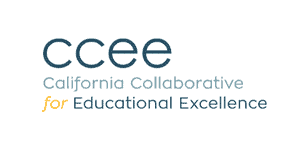
UDL for Educator Empoweremnt
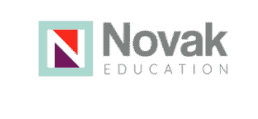
UDL Now! A Teacher’s Guide to Applying Universal Design for Learning in Today’s Classrooms
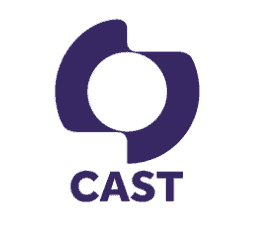
The Assessment Playbook: A UDL Approach
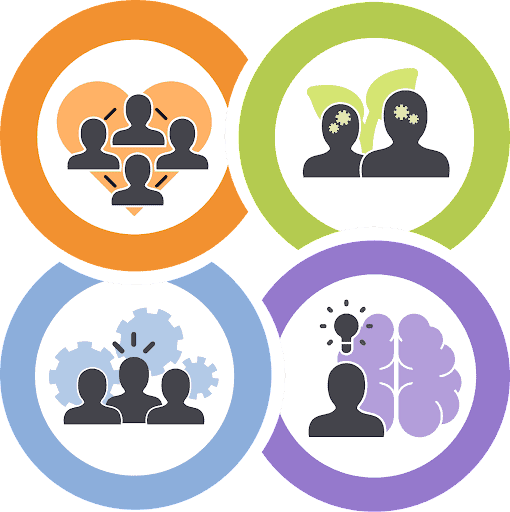
UDL-SIC Guide
This guide outlines the purpose and use of the UDL-SIC to support effective school-wide UDL implementation.

UDL-SIC Goal Setting and Planning Tool

UDL Initiative Alignment Tool
Progress Monitoring
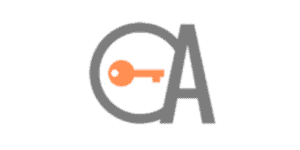
UDL Look-Fors
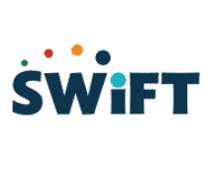
Fidelity Integrity Assessment
This tool may be familiar to you if you’ve already been implementing MTSS as part of the CA MTSS Initiative.

The UDL-SICC Criteria
WORK PLAN
Download a Customizable Work Plan
Enter your information below to download a work plan you can customize to your needs.
UDL School Implementation Criteria (UDL-SIC) by CAST, Inc. is licensed under CC BY-NC-ND 4.0
UDL-SIC Goal Setting and Planning Tool by CAST, Inc. is licensed under CC BY-NC-ND 4.0
UDL-SIC Guide by CAST, Inc. is licensed under CC BY-NC-ND 4.0
UDL Initiative Alignment Tool by CAST, Inc. is licensed under CC BY-NC-ND 4.0
